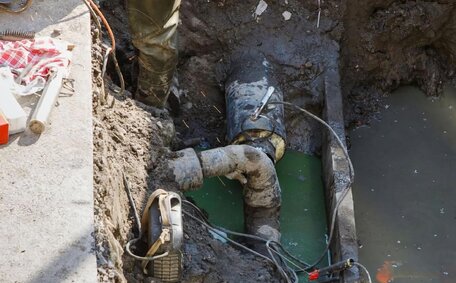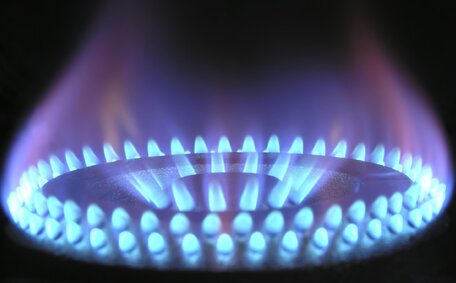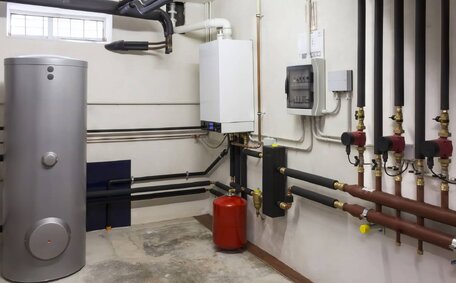
Sump Pump Failure Solutions
Sump pumps fail due to power outages, clogs, frozen pipes, and more. Prevent water damage by understanding causes and contacting plumbers for solutions to extend pump life.
Read MoreMixing valves are devices that regulate hot water, ensuring it’s delivered at a safe maximum temperature of 50°C.
A thermostatic mixing valve is crucial in preventing scalding as it ensures water temperatures do not exceed 50°C at outlets like showers, baths, and sinks.
In a hot water system, hot water stored is typically at temperatures above 60°C to control bacteria growth. Without mixing valves, critically hot water could reach taps, presenting a significant burn risk. Mixing valves also temper extremely cold water, adjusting the flow for safe personal hygiene use.
Mixing valves are vital in providing reliable temperature control of your water for scalding prevention and overall safety. They respond to fluctuations in temperature and pressure, maintaining consistent hot and cold water supply temperatures. It’s crucial for valves TMVs to respond to sudden changes in water supply temperature, pressure variations, and seasonal fluctuations, which can all affect output temperatures from water heaters.
Modern thermostatic mixing valves (TMVs) are engineered to maintain water temperatures within 3°C of the desired setpoint. Thermostatic mixing TMVs installed are among the most common, with many jurisdictions mandating their installation for outlets used for personal hygiene in various settings.
When comes to protecting the elderly, children, and those with mobility or memory impairments, installing and upkeeping mixing valves is a vital safeguard against accidental scalding. They also improve energy efficiency by only heating water to where it needs to be for its application, rather than overheating all water in a system.
The hot water tempering valve prevents scalding by blending both hot cold water together to produce a temperature mixed water that’s safe and regulated before it reaches taps and showers. Incorporating a thermostatic element, these valves adjust to temperature shifts, regulating the water mix to avoid extremes.
When hot water above 50°C enters from the water heater, the thermostatic element expands, which reduces the risk of scalding as the tempering valve can open to allow more cold water into the mix with the hot, ensuring the temperature mixed is consistent and safe. The temperature hot mixed water exits the mixing valve TMV at a controlled temperature, ensuring it’s never too hot, thus drastically reducing the risk of scalding incidents.
Without a valve TMV, 70°C storage tank water could flow unchecked to a shower. At this extreme temperature, a severe scald would occur in just a time span no longer than half a second. A correctly installed and calibrated mixing valve should consistently provide water at 50°C, regardless of fluctuations in the supply.
In summary, these valves are essential for moderating potentially dangerous hot water to a safe temperature for bathing, thus preventing accidental scalding.
Understanding the differences between the main types of mixing valves—thermostatic mixing valves (TMVs) and tempering valves—is essential.
Thermostatic mixing valves, with their responsive thermostatic elements, adjust the hot and cold water blend faster than tempering valves. They maintain constant temperature output, usually within +/-3°C. TMVs are commonly installed in homes and institutions to control water temperature for personal hygiene applications like shower bath units and hand basins.
Tempering valves mix hot and cold water too but rely on balancing pressures and lack the temperature-sensing capability of TMVs.
These valves establish a safe output temperature by equalising the pressures of the incoming hot and cold water.
Despite differing mechanisms, both types of valves are important in ensuring the delivery of safe, tempered water to prevent accidental scalding across various settings.
TMV tempering valves are designed to deliver water at a regulated, safe temperature within your system. Tempering valves mix hot water from the water heater with cold water, reducing the temperature to around 50°C before delivery to taps and fixtures.
Unlike thermostatic mixing valves which actively adjust water temperature, tempering valves operate on a set mechanical principle. Their design includes a piston or spring-loaded valve to maintain a stable temperature and pressure balance.
As your water heater raises hot water pressure, the piston opens, regulating the incoming water influx of cold into the mixing chamber until an equilibrium temperature is reached. This simple mechanism ensures delivery of temperature water that’s appropriately tempered.
Australian plumbing regulations require a tempering valve installed in places like nursing homes where hot water over 50 degrees Celsius could cause injury. This includes areas like bathrooms, ensuites, laundries and kitchens in residential care homes, hospitals, schools, childcare centres and other facilities accessed by vulnerable people.
By limiting hot water temperature to around 50 degrees Celsius, tempering valves greatly enhance safety, controlling temperatures to reduce scald risk. Burns can still occur at this temperature with prolonged skin contact however brief exposure, as found when washing hands or showering, should not cause injury.
Tempering valves are a cost-effective alternative to TMVs, suitable where precise temperature control is less critical. Simple inspection testing and replacement every 5 years is recommended.
Thermostatic mixing valves (TMVs) represent the pinnacle of precision in the nexus of plumbing drainage technology. They utilise a thermostatic element that directly measures and adjusts outlet water temperature to maintain a constant delivery within +/-3°C.
The TMV closely monitors how temperature can impact comfort levels and reacts immediately to moderate blending, ensuring water comes out at the desired comfort level. If the hot or cold supply suddenly fluctuates by more than 10 degrees, the valve will adjust itself to ensure the target delivery temperature is unchanged.
With advanced thermal feedback control, unlike basic tempering valves, TMVs are adept at delivering very accurate temperatures, which speaks volumes about thermostatic mixing and its critical role in scalding protection. TMVs must meet performance standards, achieving a water temperature no higher than 43°C at the outlet within five seconds of activation.
Due to their precision set-point control, TMVs are mandated for use in hospitals rooms, hydrotherapy facilities, and assisted care homes in Australia. They also assist with mitigating the risk of legionella bacteria by preventing overly hot water sitting in long pipe runs.
Make sure thermostatic mixing valves are maintained in accordance with manufacturer recommendations for ongoing safety and efficiency. Routine checks by a licenced professional using calibrated test equipment help validate performance and determine replacement intervals.
Mixing valves should be installed as close as possible to the fixtures or outlets where tempered water is required. This is to minimise the amount of pipework between the valve and outlet that could cause uncontrolled temperature gain or loss.
In residential homes, common points to install tempering valve units include:
In commercial and institutional buildings such as hospitals, schools and aged care homes, dedicated mixing valves should be installed for:
Over time, when retrofitting a thermostatic mixing valve TMV, the prime location is often directly at the water heater outlet to ensure it tempers water to all hot taps and fixtures. Care must be taken not to install mixing valves too far from outlets or in difficult to access locations as this will hamper maintenance and testing.
Should you require professional assistance, visit our licensed plumbers, harnessing years of expertise to select and position TMV and tempering valve models, ensuring safe tempered water distribution.
It’s important to have proper installation of mixing valves for safety and optimal performance in your home. This task requires a licenced plumber to select the right mixing valve model and install it in an optimal position.
Thermostatic mixing valves (TMVs) have strict installation compliance codes to meet. Our technicians can set installing TMV units and are trained and certified to correctly fit TMVs per AS 4032.1 requirements.
Some key aspects of mixing valve installation include:
Once operational, TMVs tempering units require regular inspection, testing and occasional parts replacement to keep performing safely.
As water supply conditions and equipment ages, mixing valve components can wear, stick or fail. We recommend:
It’s important Cronulla Plumbing’s licensed TMV experts use advanced diagnostics to assess mixing valve function and water temperature output. We can restore valves to as-new performance or arrange replacement if they are faulty.
Regularly testing mixing valves is critical for ensuring safe operation and consistent delivery of correctly tempered water. Licenced professionals should inspect thermostatic mixing valves (TMVs) and tempering valves at least annually in commercial facilities, with more frequent testing needed in high-risk settings.
A standard mixing valve test involves the technician:
Test results outside specified parameters indicate the mixing valve needs servicing or replacing. Common reasons for replacement include:
Mixing valves that are not set to a particular temperature or are left in place beyond service life pose significant scald risks. Failure to meet standards around TMV testing and replacement intervals can also lead to lawsuits in the event of water-related injuries. Our licenced technicians ensure your valves meet all compliance guidelines.
As home technology advances, mixing valves must be updated to maintain both compatibility and safety. What you need know is that new hot water systems like solar or heat pump units can supply water at higher temperatures not compatible with existing valves.
Solar hot water systems, producing water over 60°C, require specifically designed solar-rated mixing valves. These high-performance valves moderate temperatures up to 90°C down to safe levels.
Heat pumps challenge mixing valves during sanitisation cycles that can raise water temperatures over 60°C. TMVs must withstand temperatures up to 85°C from heat pumps. Upgrading older mixing valves prevents potential failure during heat pump sanitisation.
Innovative Wi-Fi-connected TMVs now enable remote temperature monitoring. If TMV water output exceeds safe limits, alerts notify maintenance staff via app notifications or emails.
Mixing valves continue to improve alongside hot water technology changes. Our qualified plumbers stay informed on the latest valve specifications from reputable brands to ensure new systems integrate safely and efficiently.
Sump pumps fail due to power outages, clogs, frozen pipes, and more. Prevent water damage by understanding causes and contacting plumbers for solutions to extend pump life.
Read MoreIf your monthly gas bill rises suddenly for no clear reason, the cause could be a gas leak from old pipes or appliances. Contact your provider to investigate.
Read MoreScale buildup reduces the efficiency of hot water systems over time. Regular descaling helps remove this. Flush your system with vinegar or a descaling solution.
Read MoreCronulla, 2230 NSW
We will call back as soon as possible.




